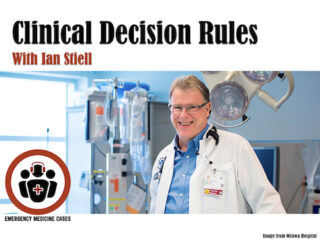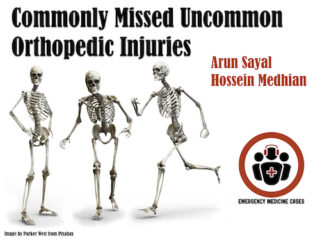Episode 57: The Stiell Sessions 2 – Update in Atrial Fibrillation 2014
In this bonus EM Cases podcast, The Stiell Sessions 2, we have Dr. Ian Stiell discussing an update in Atrial Fibrillation 2014 management including the age-old question of rate control vs rhythm control, the new CHADS-65 algorithm for oral anticogulant therapy, the need to initiate anticoagulant therapy in the ED, the more aggressive use of the Ottawa Aggressive Protocol, the dangers of attempting to cardiovert unstable patients who are in permanent Atrial Fibrillation, the new 150 rule to help determine the likelihood of successful cardioversion and much more. Thanks to all the listeners who did the survey on clinical decision rules and the post-listen survey.










